
Antonio F. Vachris (1866-1944) was an Italian-American police officer on Coney Island who headed the Italian Branch of the New York City Police Department. [1]

Antonio F. Vachris (1866-1944) was an Italian-American police officer on Coney Island who headed the Italian Branch of the New York City Police Department. [1]
He was born in June 1866 in France to Italian parents. [2] [3] He was an active prosecutor, and, in 1908, received a death threat in a letter addressed to him and Brooklyn judge Norman Staunton Dike from the "Black Hand", a terrorist group. [4] He solved the Michael Scimeca kidnapping case in 1910. [1] His predecessor, Lieutenant Joseph Petrosino, was murdered in Sicily in 1909, and Vachris had to go to Palermo to retrieve Petrosino's list of Italian criminals operating in the United States. Vachris was also involved in policing adult entertainment on Coney Island. [2]
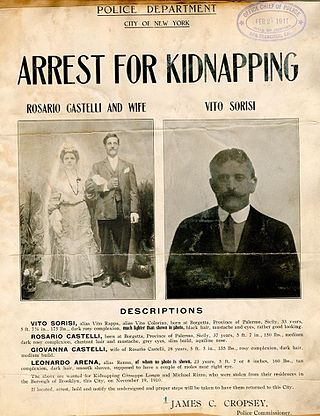
Black Hand was a type of Italian extortion racket. Originally developed in the eighteenth century, Black Hand extortion came to the United States in the later nineteenth century with immigrants.
Nicolò Terranova, also known as Nicholas "Nick" Morello, was one of the first Italian-American organized crime figures in New York City he succeeded Giuseppe Morello as boss of the then Morello Gang in 1909 and was succeeded by Vincenzo Terranova in 1916. Along with his half-brother Giuseppe Morello and brothers Ciro and Vincenzo Terranova, he founded the Morello crime family, and was later one of the participants in the Mafia-Camorra War of 1915–17.

The Morello crime family was one of the earliest crime families to be established in the United States and New York City. The Morellos were based in Manhattan's Italian Harlem and eventually gained dominance in the Italian underworld by defeating the rival Neapolitan Camorra of Brooklyn. They were the predecessors of what eventually became known as the Genovese crime family.
David C. Hennessy was a police chief of New Orleans. As a young detective, he made headlines in 1881 when he captured a notorious Italian criminal, Giuseppe Esposito. In 1888, he was promoted to superintendent and chief of police. While in office he made a number of improvements to the force, and was well known and respected in the New Orleans community.

Vito Cascio Ferro or Vito Cascioferro, also known as Don Vito, was a prominent member of the Sicilian Mafia. He also operated for several years in the United States. He is often depicted as the "boss of bosses", although such a position does not exist in the loose structure of Cosa Nostra in Sicily.
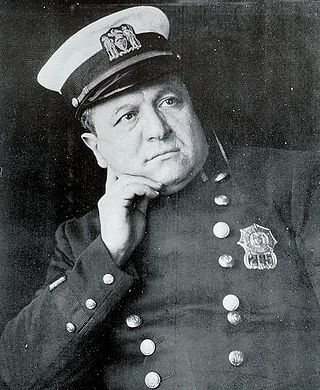
Joseph Petrosino was an Italian-born New York City Police Department (NYPD) officer who was a pioneer in the fight against organized crime. Crime fighting techniques that Petrosino pioneered are still practiced by law enforcement agencies.
The Mafia–Camorra War was a gang war in New York City that lasted from 1915–1917. On one side was the originally Sicilian Morello crime family of Manhattan; on the other side were gangs originally from Naples and the surrounding Campania region, based in Navy Street in Brooklyn and Coney Island referred to as the Camorra. The fight over the control of the New York rackets started after the killing of Giosue Gallucci, the undisputed King of Little Italy, and his son on May 17, 1915. The trials that followed in 1918 completely smashed the Camorra gangs; the protection that they enjoyed was demolished from the testimonies of their own men. It was the end of the Camorra in New York and the rise in power of American-based Sicilian Mafia groups.
Michael Fiaschetti was a prominent New York detective and succeeded Lt. Joseph Petrosino as head of the NYPD's "Italian Squad".
Pellegrino Morano (1877–unknown) was the head of a group of Neapolitans criminals with roots in the Camorra based in Coney Island, where he owned the Santa Lucia restaurant, which was often used as the headquarters for their gang, known as the Coney Island gang. He is also known as Marano.

On April 27, 1981, the Red Brigades kidnapped the 60-year-old Christian Democrat (DC) politician Ciro Cirillo and killed his two-man escort in the garage of his Naples apartment building. At the time Cirillo directed reconstruction efforts in Campania devastated by the earthquake in the Irpinia region on November 23, 1980. He was released after a controversial deal with the Camorra.
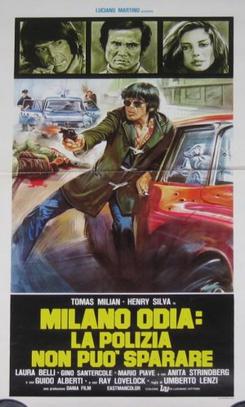
Almost Human is a 1974 Italian poliziotteschi film directed by Umberto Lenzi. This film stars Tomas Milian, Henry Silva, Ray Lovelock and Anita Strindberg.

Pay or Die is a 1960 American biographical and crime film directed by Richard Wilson and starring Ernest Borgnine, Zohra Lampert, Howard Caine, Alan Austin, and Robert F. Simon.

Enrico Alfano, also known as "Erricone", was considered to be one of the chiefs of the Camorra, a Mafia-type organisation in the region of Campania and its capital Naples in Italy, at the turn of the 20th century. He was described as "a kind of president of the confederation." According to some sources, Alfano was linked to the murder of New York City police lieutenant Joseph Petrosino in Palermo in 1909, however, the murder had since been attributed to the Sicilian Mafia.
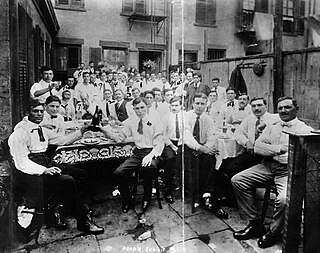
The Brooklyn Camorra or New York Camorra was a loose grouping of early-20th-century organized crime gangs that formed among Italian immigrants originating in Naples and the surrounding Campania region living in Greater New York, particularly in Brooklyn. In the early 20th century, the criminal underworld of New York City consisted largely of Italian Harlem-based Sicilians and groups of Neapolitans from Brooklyn, sometimes referred to as the Brooklyn Camorra, as Neapolitan organized crime is referred to as the Camorra.

Giosuè Gallucci, also known as Luccariello, was a crime boss of Italian Harlem in New York City affiliated with the Camorra. He dominated the area from 1910–1915 and was also known as the undisputed "King of Little Italy" or "The Boss", due to his power in the criminal underworld and political connections. He held strict control over the policy game, employing Neapolitan and Sicilian street gangs as his enforcers.

Black Hand is a 1950 American film noir directed by Richard Thorpe and starring Gene Kelly as an Italian immigrant fighting against the Black Hand extortion racket in New York City in the first decade of the 20th century.
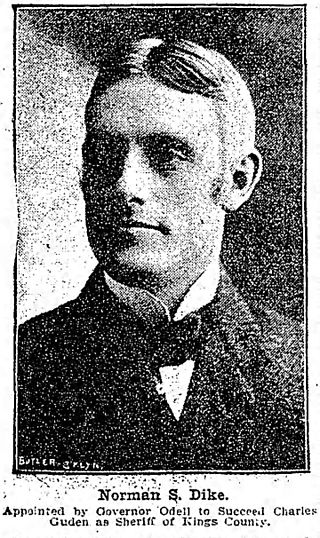
Norman Staunton Dike was a New York State Supreme Court judge from 1920 to 1932. He had previously worked as a lawyer, sheriff, and judge in Brooklyn, New York. He was also a prominent member of the Brooklyn social scene.
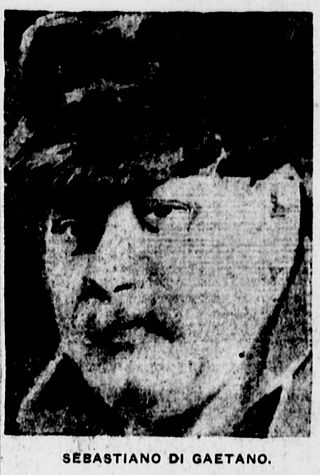
Sebastiano DiGaetano was an Italian-born New York City mafia boss of what would later become known as the Bonanno crime family. He briefly attained the title capo dei capi of the Sicilian-American mafia, after Giuseppe Morello had been convicted of counterfeiting money in 1910. DiGaetano stepped down as boss of his crime family in 1912, and disappeared shortly thereafter.

The Black Hand is an American silent film directed by Wallace McCutcheon. It is generally considered by motion-picture historians to be the earliest surviving gangster film.
The persistency of Lieut. Antonio Vachris, head of the Italian branch of the Detective Bureau, in trying to learn the secret of little Michael Scimeca's return to his parents by kidnappers, has resulted in his receiving two Black Hand letters in which he is threatened with the fate of Lieut. Giuseppi Petrosino unless he drops the case at once.
Vachris was born about 1867 [sic] in France to Italian parents. Before his third birthday, the family moved to the United States, settling in Brooklyn. He married at the age of 18. His wife was a slightly older woman named Raffela. The couple, who lived for years at 636 39th Street in Brooklyn, had a son, Charles, in 1886. Vachris was naturalized an American citizen in 1888.